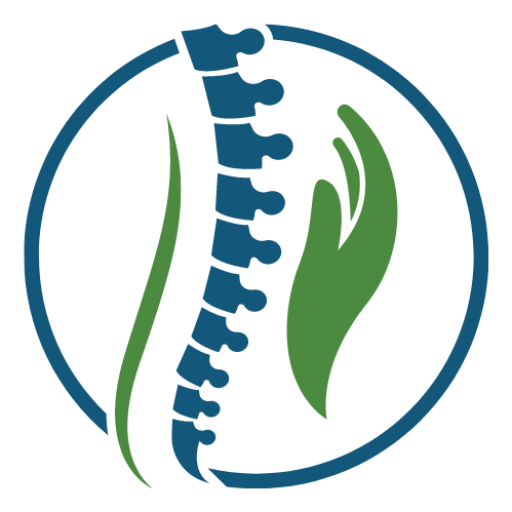Overview of Shoulder Pain and Tingling in Fingers
Shoulder pain often accompanies tingling in fingers, which can be a worrying combination for some. The shoulder joint allows for a wide range of motion, essential for activities. When pain or a tingling sensation occurs, it signals potential issues with the network of nerves. Understanding these symptoms is helpful for identifying the underlying cause. Poor posture, injury, or a medical history with shoulder or neck pain are all conditions that can contribute to the potential causes of tingling fingers and numbness in the shoulder and arm. The shoulder pain and tingling in fingers, along with other symptoms, may affect daily activities, from lifting items to simple arm movements.
Importance of Recognizing Symptoms and Their Causes
Recognising the connection between shoulder pain and tingling helps in early treatment. Common symptoms like muscle weakness and hand numbness may indicate carpal tunnel syndrome or a pinched nerve. These conditions often result from nerve stretching or compression, which may be coming from the spinal cord or the nerve root exiting the cord in the neck or upper back area. Identifying symptoms is critical for effective intervention. It can help in preventing severe pain and maintaining the health of neck muscles and the upper back. Exploring treatment options, including non-surgical treatments such as Advanced Biostructural Correction™, offers pain relief and improves function.

Improved Health & Wellbeing Begins Here
Common Causes of Shoulder Pain
Impact of Poor Posture and Shoulder Joint Injuries
Poor posture is a leading cause of shoulder pain. Sitting or standing improperly can lead to discomfort. Over time, poor posture places stress on the shoulder joint. This stress may result in a range of motion issues. The shoulder blade, or scapula, plays a role, as it is an attachment point for a number of muscles surrounding the shoulder. Shoulder joint injuries often arise partly from repetitive movements. These injuries can worsen or not heal properly due to poor posture. Conditions like frozen shoulder can develop. Overuse of shoulder muscles can cause severe pain. Proper posture can help alleviate discomfort by reducing excess stress on the muscles.
Cervical Spine Problems and Muscle Weakness
Cervical spine issues can also contribute to shoulder pain. Nerve stretching or compression in the cervical spine can cause arm pain. It may also lead to tingling in the fingers. Hand numbness is a common symptom. Muscle weakness in the upper back can exacerbate this condition. Spinal cord problems can magnify these issues. Burning sensations in the arm or shoulder (from inflammation) can occur. Identifying these issues is important for effective treatment. Addressing the cause of muscle imbalances can relieve shoulder pain. Regular exercise can improve strength, posture, and alignment.

🌟🌟🌟🌟🌟
Regular treatments from Dr Tim has helped me with back pain and headaches. It’s been massively beneficial to my health and well being . Highly recommend. ~W.D.
Connection between Shoulder Pain and Tingling in Fingers
Nerve Compression and Its Effects
Shoulder pain and tingling in fingers often stem from nerve stretching or compression. The group of nerves passing through the shoulder area can become stretched or compressed through changes caused by postural adaptations to injury, leading to sensory symptoms. A pinched or stretched nerve may cause different sensations in the arms. The cervical spine plays an important role in this network. If the spinal cord experiences too much stretching or compression, it can lead to severe pain. This affects the range of motion and daily activities.
Poor posture is usually the major contributing factor. It can exacerbate nerve distortions, leading to increased discomfort. The neck muscles can become strained, adding to the problem. This strain can worsen shoulder pain, often radiating down the arm. Medical conditions, such as arthritis, can also contribute to this issue. Understanding these links is key to effective treatment.

🌟🌟🌟🌟🌟
ABC™ and Dr Tim have dramatically helped both myself and my daughter. I have scoliosis and my daughter has posture issues which lead to terrible migraines. Tim helped us both improve our posture which led to us looking and feeling on top of the world! My daughter’s migraines have now gone! Would recommend to anyone! ~Lisa
Related Conditions and Symptoms
Carpal tunnel syndrome is a related condition often linked to similar symptoms. It involves nerve compression in the wrist, affecting the hand. Common symptoms include hand numbness and a burning sensation. Tingling in the fingers, particularly the ring finger and middle finger, is a typical sign. Many cases of “carpal tunnel” are not actually carpal tunnel and arise from nerve disturbances further up the chain.
Neck pain and upper back issues can also relate to tingling in the fingers. These areas share nerve pathways with the shoulder. Nerve disturbance in these regions can manifest as arm pain. Non-surgical treatments, like Advanced Biostructural Correction™, can offer pain relief. Anti-inflammatory medications may also help reduce swelling in the short term. Exploring these connections can guide treatment options.
Diagnosis and Evaluation
Importance of Comprehensive Medical Evaluation
A comprehensive evaluation is important when experiencing shoulder pain and tingling in the fingers. Understanding the root cause of symptoms helps ensure effective treatment. Practitioners assess shoulder joint health, checking alignment of various structures. They evaluate the range of motion and look for nerve disturbance signs. This assessment helps determine if a pinched or stretched nerve is present. Identifying conditions like these is essential for targeted treatment.
Shoulder pain can stem from various sources. It may be related to neck muscles, cervical spine, or spinal cord issues. Some cases can involve severe pain and muscle weakness. Poor posture or daily activities can contribute to or cause these symptoms. Medical evaluations identify these factors, guiding treatment options. Evaluation may also uncover less obvious factors, such as a burning sensation indicating inflammation.
🌟🌟🌟🌟🌟
My treatment and support received from Dr Tim Swindler has been life changing. As I could not walk up hill, stand up straight and was living on pain killers, I had been informed by specialists that the next step would be a back operation. Instead I turn to ABC and am now 98% pain free. I am off medication, and am able to lift, carry and do activities that I could not do before. Thank you Tim. ~Kathleen
Let’s Talk
Role of Imaging and Range of Motion Assessment
Imaging techniques can sometimes play a key role in diagnosing shoulder pain causes. X-rays, MRIs, and CT scans offer a clear view of the shoulder joint. They can reveal abnormalities like bone spurs or certain cervical spine conditions. Imaging may help detect nerve compression or stretching. It can help confirm if certain symptoms are linked to shoulder issues.
Assessing range of motion is helpful in understanding shoulder and finger symptoms. Limited motion often correlates with shoulder pain and nerve problems. Evaluating the arm’s movement helps pinpoint the source of discomfort from compensations. Tests for the neck muscles and upper back can help reveal to what extent poor posture is a factor. This comprehensive approach ensures accurate diagnosis and effective treatment. Identifying underlying issues allows for non-surgical treatments or more advanced procedures, like Advanced Biostructural Correction™, to provide lasting pain relief.
🌟🌟🌟🌟🌟
Back + body feel so much better with regular support + treatment from Dr Tim. Highly recommend.
~ Victoria
Treatment Options for Relief
Conventional Non-Surgical Approaches
Non-surgical treatments for shoulder pain and tingling in fingers may include physical therapy and anti-inflammatory medications. These methods aim to reduce inflammation and improve range of motion. However, they may not address underlying causes like poor posture or stretched or compressed nerves. Over time, reliance on medications can lead to side effects without providing long-term pain relief. Physical therapy may focus on strengthening neck and shoulder muscles, however, this rarely resolves the core issues.
Exercises in physical therapy attempt to target muscle weakness and improve movement. Yet, they may not prevent recurring shoulder pain or tingling in fingers, and in fact can often worsen it by stressing muscles that are already under too much tension. Treatment should address the entire structure, as many muscles crossing the shoulder originate as far down as the lower back, which is also influenced by other areas. Many patients find only temporary relief from these common symptoms through conventional methods.

Advanced Biostructural Correction™ and Lifestyle Modifications
Advanced Biostructural Correction™ (ABC™) offers a holistic alternative. ABC™ targets whole body alignment and aims to correct structural imbalances in the order of functional importance. It considers factors like cervical spine health, nerve compression, and daily activities. Unlike conventional methods, it provides a more comprehensive approach to shoulder pain. Patients often report significant improvement in arm pain and other symptoms once enough of the overall alignment of structures is achieved.
Lifestyle modifications also play a role in managing shoulder pain. Some targeted exercises and improving postural support can help prevent issues like carpal tunnel syndrome. Simple changes in daily activities can significantly enhance quality of life and provide much-needed pain relief. Addressing neck and shoulder joint issues holistically fosters long-term well-being.
Enjoy A Healthy and More Active Lifestyle!
We’ve got your back.
Recap and the Importance of Understanding Symptoms
Understanding shoulder pain and related symptoms is crucial for overall well-being. These symptoms often affect daily activities and can disrupt life. Recognising the connection between shoulder pain and conditions like carpal tunnel syndrome, or other nerve disturbances helps in identifying the root cause. This knowledge allows for more targeted treatment options and pain relief. Moreover, comprehending the range of motion and function of the shoulder joint and cervical spine enhances awareness of how poor posture and spinal cord issues contribute to discomfort.
Identifying the most common types of symptoms such as muscle weakness, hand numbness, and a burning sensation can prevent the progression of severe pain. Being informed aids in distinguishing between neck pain, shoulder problems, and arm pain. It also highlights the significance of medical conditions linked to nerve compression. This understanding can help prevent the exacerbation of symptoms, allowing for quicker intervention and management.
Encouragement for Treatment and Preventive Measures
Advanced Biostructural Correction™ (ABC™) offers a non-surgical treatment plan. These can alleviate shoulder pain and tingling sensations effectively. ABC™ addresses the underlying misalignments in the spine and other key parts of the skeleton. It fosters better posture and reduces nerve interference, thus enhancing the range of motion. Treatment options like ABC™ should be considered when facing persistent symptoms, particularly if they have been a problem for months or longer.
Incorporating preventive measures is important for maintaining shoulder and neck health. Simple adjustments in daily activities can improve posture, reducing the risk of nerve irritation. Anti-inflammatory medications in the short term can also play a role in managing inflammation, aiding recovery. Keeping muscles around the shoulder joint flexible and strong is helpful. Taking proactive steps will help achieve long-term relief and helps prevent the recurrence of shoulder pain and symptoms in the arms, hands, and fingers.

